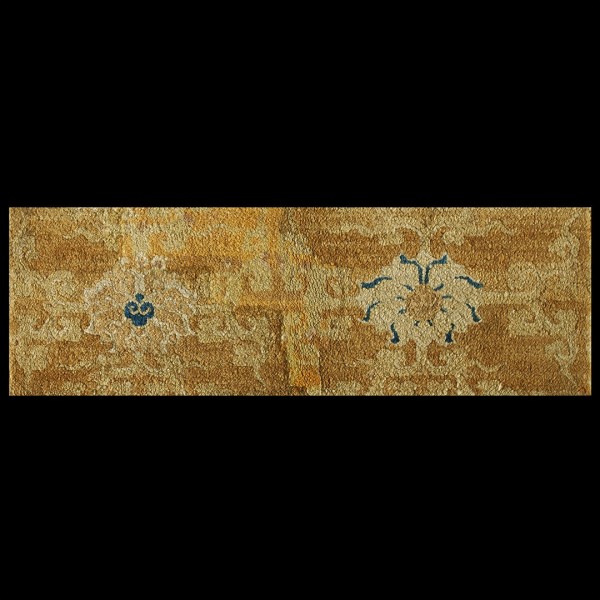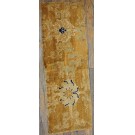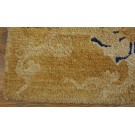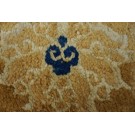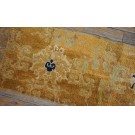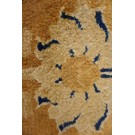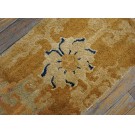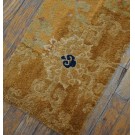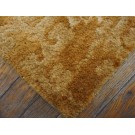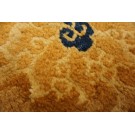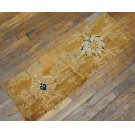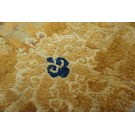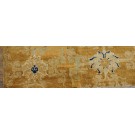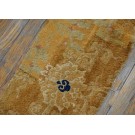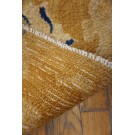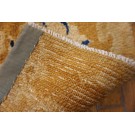17th Century Ming Dynasty Peking Carpet Fragment
Fragment of the so called Tiffany Carpet with Lotus Flowers
| Stock ID: | #25231 |
| General Rug Type: | Chinese |
| Specific Rug Type: | Chinese - Peking |
| Circa: | 1650 |
| Ground Color: | Camel |
| Border Color: | Camel |
| Origin: | China |
| Material: | Wool |
| Weave: | Pile - Knotted |
| Shape: | Rectangle |
| Width: | 1' 2" ( 36 cm ) |
| Length: | 3' 3" ( 99 cm ) |
DescriptionChineseCarpets made in China proper. See entries Ningshia, Peking, Art Deco. Chinese - PekingThe commercial Peking carpet is a later 19th century development, begun by importing weaves from Ningshia (see entry) to create and export industry aimed at Western markets. The foundation is cotton and the pile is a good quality carpet wool which takes dyes particularly well. The neat medium weave is in Persian (asymmetric) knots. Designs are strictly Chinese and the whole motif repertoire of Chinese art is employed. Blue and white is the most popular color combination and red is particularly rare. Sizes tend to 9 x 12 and larger, and few small pieces appear. For a short time in the early 1920s Persian designs were woven to capitalize on the death of new Iranian goods. The industry decimated by the Communist Revolution relocated to the Pearl River area. There is a good supply of antique carpets at reasonable prices. | |
| Tearsheet Download | |
